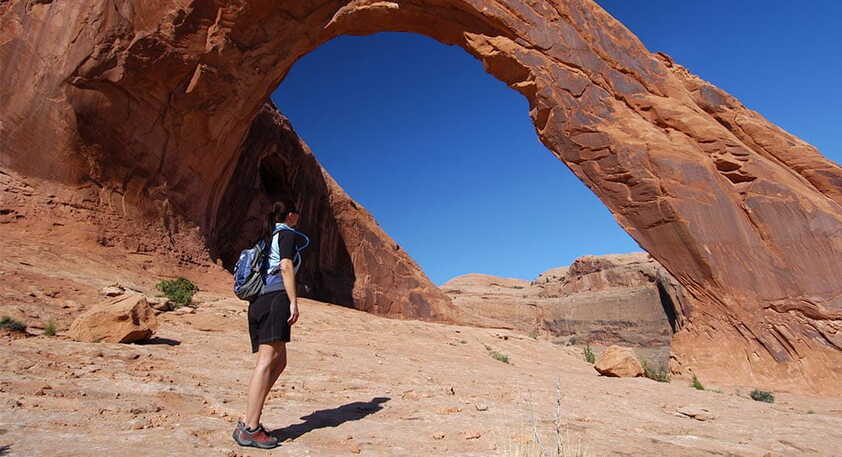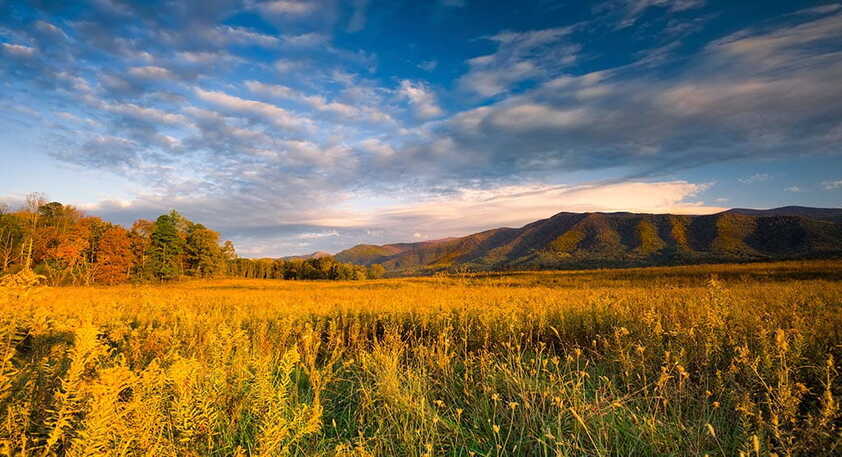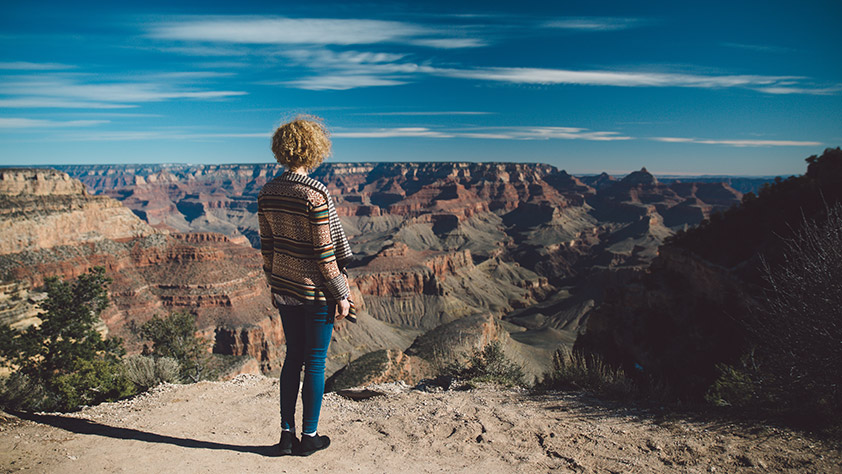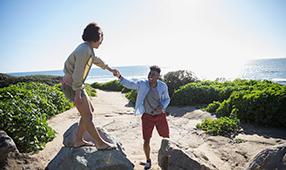Key takeaways
- Avoid crowds during peak travel times at America’s national parks by venturing farther down trails.
- Visit parks early in the morning and in the evening.
- Consider talking with a park ranger to get insight into lesser-known spots.
From the Great Smoky Mountains to Yellowstone and Zion, America’s national parks draw millions of visitors each year. No wonder: They offer incredible natural beauty and diversity. Of course, educators typically can visit only during school vacations—the busiest times of all at national parks.
But don’t despair: Read our six strategies for avoiding the crowds, and then start planning your trip to one of America’s incomparable natural treasures.
1. Consider overlooked parks and hidden corners of popular parks
All national parks offer spectacular scenery, but not all of them are crowded, says Kurt Repanshek, founder and editor in chief of the online magazine National Parks Traveler.

While Utah’s Arches National Park, with its nearly 76,700 acres, attracts more than a million annual visitors, nearby Capitol Reef, which is more than three times as large at 240,000 acres, draws just 700,000. “Capitol Reef is a vastly overlooked park,” Repanshek says. “And it provides much the same type of geologic experience as Arches.”
California’s Lassen Volcanic National Park, with its bubbling mud pots and fumaroles, hosts just 400,000 visitors in a good year, compared with more than 3 million annual visitors to Yellowstone.
Even in popular parks, there are less-trodden corners. The North Rim of the Grand Canyon sees less traffic than the South Rim, for example.
In Maine’s Acadia National Park, the more remote southwest side of Mount Desert Island is quieter than the main areas. “And down coast, Isle Au Haut is a great spot with a low visitor cap, so it’s never crowded,” Repanshek says.
2. Walk more than a quarter mile
“Most visitors get out of their cars at scenic spots and take a picture, but significantly fewer actually venture down a trail,” says National Park Service (NPS) spokeswoman Kathy Kupper, who was a park ranger for more than 20 years. “Crowds tend to thin out after you’ve gone a quarter mile or so down a trail.”
For hearty folks willing to backpack even a couple of miles to a campsite, the wilderness within the national parks is highly unused, Kupper says: “It is rare for a backcountry camping area to be full.”
3. Visit early morning—and evening
Just about everyone who goes to Great Smoky Mountains National Park, the most visited national park, will head to popular Cades Cove—but few go at dawn, Kupper says. Early hours can be the best time to see top attractions, not only because of a spectacular sunrise, but also because that’s when wildlife will be out, she says: “There will likely be other early birds, but nothing compared to midday crowds.”

For the end of your day, Repanshek recommends having a late dinner so you can use the early evening hours to explore after the day-trippers have left. “On one trip, I visited Lake McDonald Lodge in Glacier National Park, and after 5 p.m. it felt like my own private lakeside,” he says.
4. Go to the visitor center
A single stop at the visitor center can help you plan your strategy and alert you to hidden gems within the park. “Rangers are always willing to tell you about their favorite, lesser-known spots,” Kupper says.
If you’re buying guidebooks or maps at the visitor center, be sure to ask about a teacher’s discount. Many bookstores in national park information centers are nonprofits that offer special deals for educators.
5. Check for cancellations of hot reservations
Tour companies tend to book national park lodge and hotel rooms a year in advance, then cancel unneeded rooms a few months or weeks out, Repanshek says. Look at the lodge’s booking website or call in the weeks before your trip to see if a room has opened up. Persistence often pays, he says.
Likewise, campsite reservations often get canceled. Check the Recreation.gov clearinghouse website for last-minute reservations. Kupper adds that in a lot of the parks, there are several first-come, first-serve campsites for those willing to show up early and gamble on availability.
6. Take advantage of national park teaching resources
The NPS website has a whole section devoted to free curriculum materials, now searchable by topic (e.g., dinosaurs), Kupper says.
From card games and literature to snowshoes (!), the NPS also provides “Parks as Classrooms” materials to enrich your park experience or your students’ learning. Some, like the snowshoes at Denali, are to use at the park. Others are resources to enliven classroom lessons.
There’s also a Distance Learning program, in which teachers can coordinate live video lessons with rangers at places such as the Grand Canyon or a live dive at Channel Islands National Park so you can share your travel experiences with your class.












